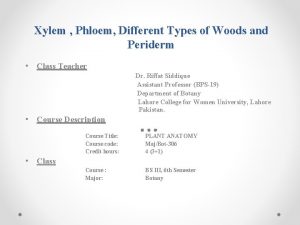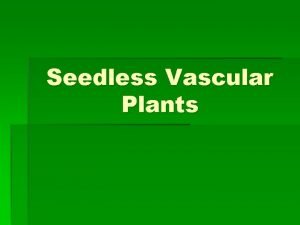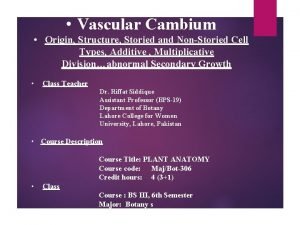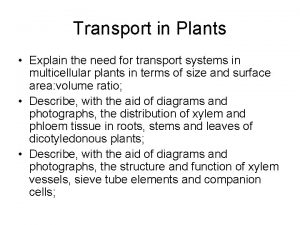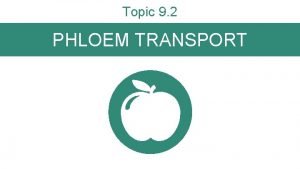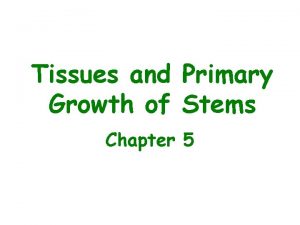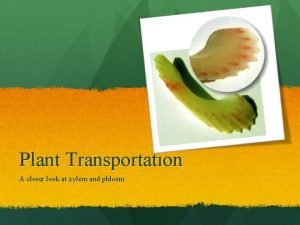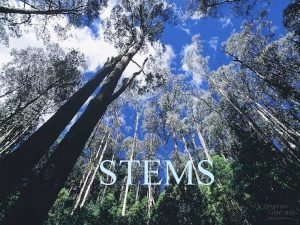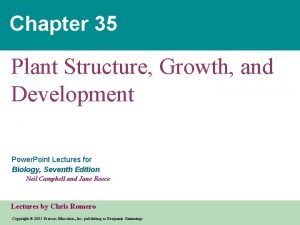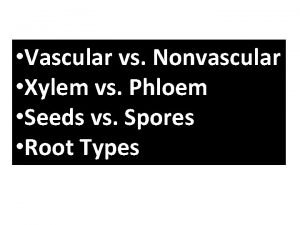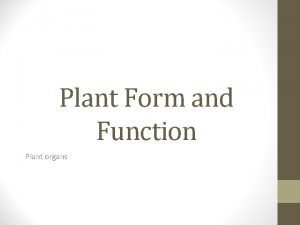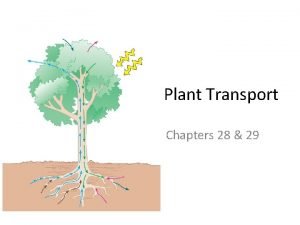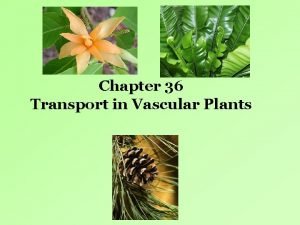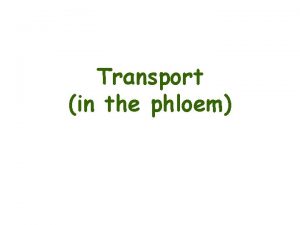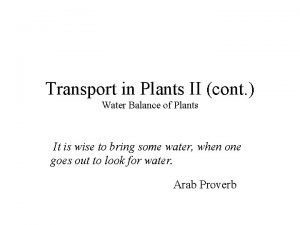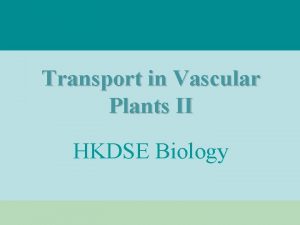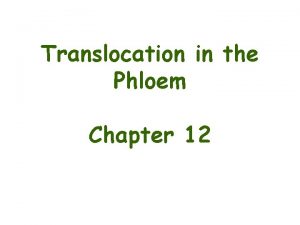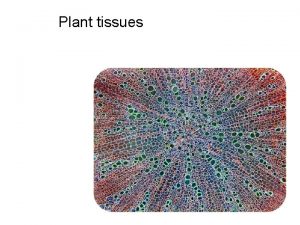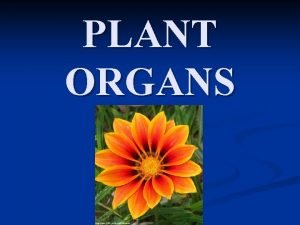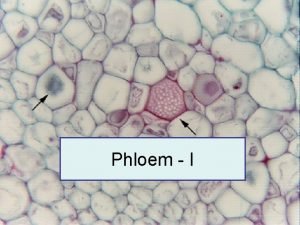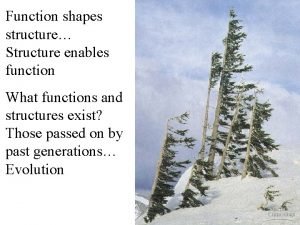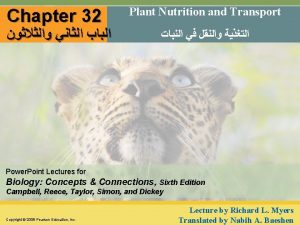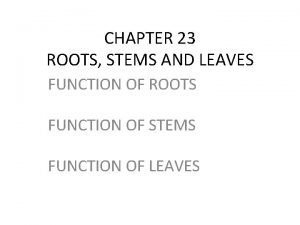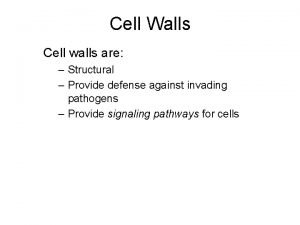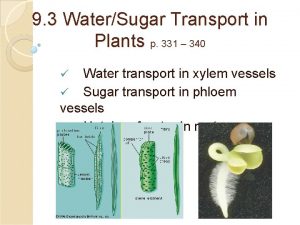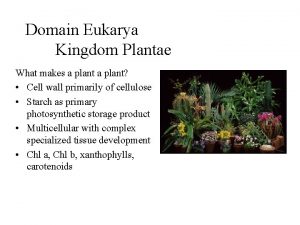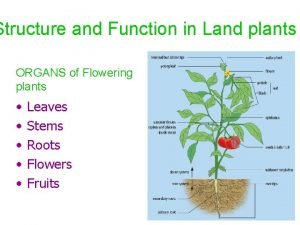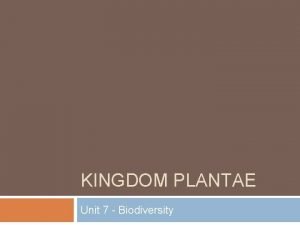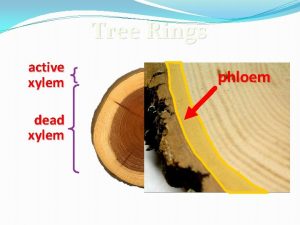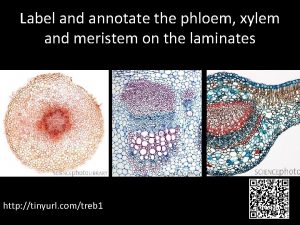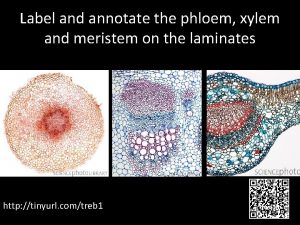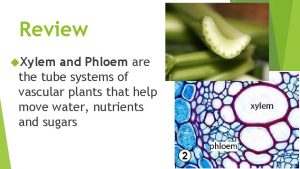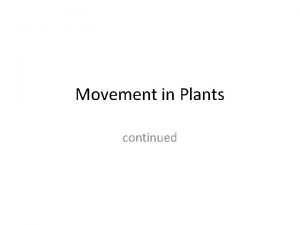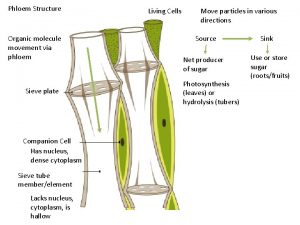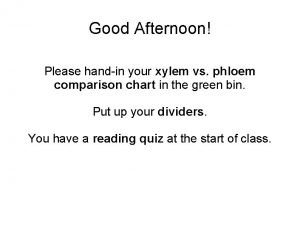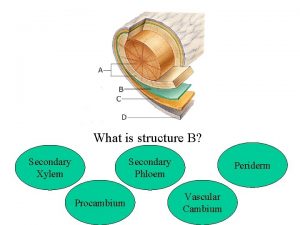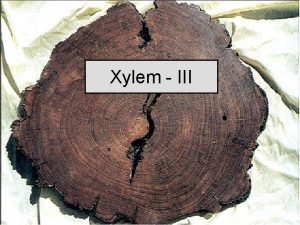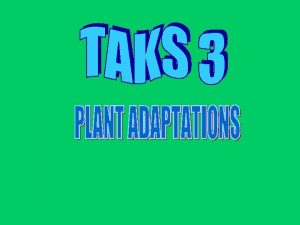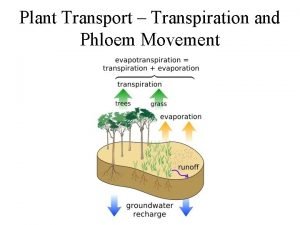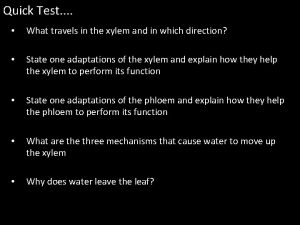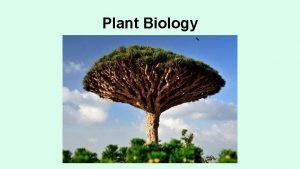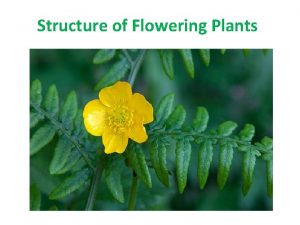a state the functions of xylem and phloem

































- Slides: 33

a. state the functions of xylem and phloem. b. identify the positions of xylem and phloem tissues as seen in transverse section of roots, stems and leaves. c. investigate, using a suitable stain, the pathway of water in a cut stem.

How is water transported against gravity from the roots, up the xylem and to the leaves?

Think Like a Scientists use ‘thought experiments’ to help them solve problems. 3

I wonder where trees get water from? Well, obviously from the ground. What are the processes involved?

How does water move through the transport system of a plant IF it does not have a heart to act as a pump? PAUSE to PONDER • How is water lifted against gravity from the ground to the leaves through this transport system? • Are the products of photosynthesis also carried in a set of vessels from the leaves to the roots? 5

Vascular bundles: xylem & phloem Xylem transports water & dissolved minerals from roots to leaves. Phloem transports food (sugar) made in leaves to all other parts of the plant.

xylem phloem Distribution of vascular bundles in roots xylem phloem

Xylem & phloem tissues in stems.

xylem phloem Distribution of vascular bundles in leaves.

Diagram showing a section through a leaf. xylem phloem

d. describe the structure and functions of root hair cells in relation to their surface area, and to water and ion uptake. e. define transpiration. f. describe how factors (e. g humidity, temperature, light intensity) affect the rate of transpiration. g. describe how wilting occurs.

Thousands of tiny root hairs on each root allows water to enter the plant very quickly. How do water & dissolved minerals move from the soil to the roots?

Osmosis occurs due to presence of : i) concentration gradient between the sap in a root hair cell and the soil water. ii) partially permeable membrane

Water enters by osmosis from root hairs and continues until it reaches the xylem vessels.

cuticle Movement of Water inside a Leaf nucleus 1 1 Water continuously moves out of the mesophyll cells to form a thin film of moisture over their surfaces. chloroplasts upper epidermis palisade mesophyll film of water xylem of vein phloem spongy mesophyll cell sap intercellular air space sub-stomatal air space guard cell stomatal pore lower epidermis arrows show path of water vapour and water

Transpiration: The loss of water vapour from the stomata.

How do nitrate ions get into plants? Are they directly absorbed from the air? No. Even though the air has 79% of nitrogen, it is highly unreactive. PAUSE to PONDER • How are ions transported around in plants?

Diffusion and active transport are involved in the absorption of dissolved mineral salts. Xylem vessel

What happens when the concentration of dissolved sugars and mineral salts in the sap of root hair is higher than the surrounding soil water? Concentration of dissolved sugars and mineral salts is higher in roots. Concentration of dissolved sugars and mineral salts is lower in soil.

Inv. 8. 2: Path of water through a plant (p 105)

Inv. 8. 3 : The ringing experiment (p 107) • In the ringing experiment, a ring of bark is scraped away that also removes the phloem.

Results: twig A twig B twig C n The phloem tissues have been removed. n Manufactured food substances (e. g sugar and amino acid) accumulate above the cut region and cause swelling in twigs A and C. However in twig B, manufactured food can pass through the phloem without any barrier. n This suggests that food is made in the leaves and are transported through the phloem.

At the beginning A B Inv. 8. 6: Investigating transpiration in leaves and stems

After placing the bell jars in sunlight for 1 hour A B Results: Drops of liquid are seen on the inner surface of the bell jar A.

6) There is no change. No liquid droplets form on the inner surface of the bell jar. 7) The anhydrous copper sulphate turns blue. 8) Water n n n Questions: 1) To prevent the water in the soil from evaporating. 2) Roots have absorbed water in the soil and transported it up the plant. Water vapour given off by the plant condenses on the inner surface of the bell jar.

Investigation 8. 6 : Comparing Transpiration in Leaves and Stems 6) Water condensed on the inner surface of the bell jar. 7) Some water condensed on the inner surface of the bell jar but not as much as in the bell jar with the leafy twig. 8) Transpiration has occurred in both jars. Transpiration occurs mainly through the leaves, so more water condensed on the inner surface of the bell jar with the leafy twig.

Water is drawn up the xylem in the stem by three factors: • Root pressure 3) Transpiration pull 2) Capillary action 1) Root • Capillary action • Transpiration pressure pull

n n n Root pressure refers to the forces that draws water up to the xylem vessels by osmosis and active transport. Capillary action plays a part in upward movement of water in small plants. Transpiration pull refers to the strongest force that causes water to rise up to the leaves of tall trees. It is a result of loss of water vapour from the leaves (transpiration).

Factors affecting rate of transpiration: a) b) Humidity of the air Temperature of the air c) Strong wind d) Light

Light affects the opening and closing of stomata. Daylight: Stomata open and become wider. At night: Stomata close.

Excessive transpiration causes mesophyll cells to become flaccid. wilting results

phloem TRANSPORT IN PLANTS conducts is carried out by food (e. g sucrose & amino acids) xylem transpiration pull root pressure capillary action xylem vessels which transport in plants is aided by in plants can be lost via water is transported from transpiration root hair cells is affected by many external factors such as wind speed temperature light to other plant parts relative humidity mineral salts

• http: //www. purchon. com/biology/flash/le af. swf • http: //scienceyear. digitalbrain. com/s cienceyear/web/data/ks 4/year 10/pra ctise/? backto=Gverb%3 d • http: //www. bbc. co. uk/education/gcse bitesize/science_biology/plants/trans piration_rev. shtml#trans 2
 Types of xylem and phloem
Types of xylem and phloem Seedless vascular plant life cycle
Seedless vascular plant life cycle Fascicular
Fascicular Definition of xylem and phloem
Definition of xylem and phloem Structure of xylem
Structure of xylem Phloem structure
Phloem structure Types of plant tissue
Types of plant tissue Xylem and phloem
Xylem and phloem Xylem und phloem
Xylem und phloem Plant structure growth and development
Plant structure growth and development Vascular vs nonvascular
Vascular vs nonvascular Cambium phloem xylem
Cambium phloem xylem Bulk flow transport
Bulk flow transport Symplast and apoplast route
Symplast and apoplast route Xylem fibres
Xylem fibres Source to sink phloem
Source to sink phloem Phloem
Phloem Transportation in plants
Transportation in plants Primary phloem
Primary phloem Phloem
Phloem Plant tissue
Plant tissue Phloem in plants
Phloem in plants Companion cells in plants
Companion cells in plants Phloem
Phloem Phloem
Phloem Function of stems
Function of stems Phloem
Phloem Phloem
Phloem Watersugar
Watersugar Kingdom plantae domain
Kingdom plantae domain Water movement in xylem
Water movement in xylem Water movement in xylem
Water movement in xylem Quizlet
Quizlet Xylem
Xylem
